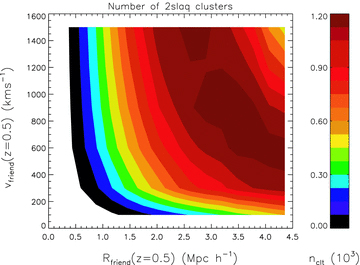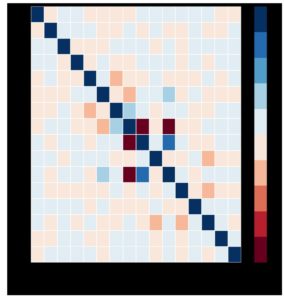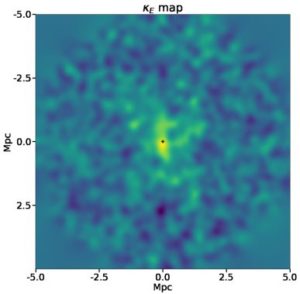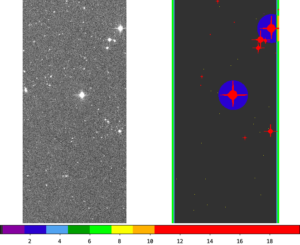| Authors: | S. Farrens, F.B. Abdalla, E.S. Cypriano, C. Sabiu, C. Blake |
| Journal: | MNRAS |
| Year: | 2011 |
| Download: | ADS | arXiv |
Abstract
We present a catalogue of galaxy groups and clusters selected using a friends-of-friends (FoF) algorithm with a dynamic linking length from the 2dF-SDSS LRG and QSO (2SLAQ) luminous red galaxy survey. The linking parameters for the code are chosen through an analysis of simulated 2SLAQ haloes. The resulting catalogue includes 313 clusters containing 1152 galaxies. The galaxy groups and clusters have an average velocity dispersion of ? km s-1 and an average size of ? Mpc h-1. Galaxies from regions of 1 deg2 and centred on the galaxy clusters were downloaded from the Sloan Digital Sky Survey Data Release 6. Investigating the photometric redshifts and cluster red sequence of these galaxies shows that the galaxy clusters detected with the FoF algorithm are reliable out to z˜ 0.6. We estimate masses for the clusters using their velocity dispersions. These mass estimates are shown to be consistent with 2SLAQ mock halo masses. Further analysis of the simulation haloes shows that clipping out low-richness groups with large radii improves the purity of catalogue from 52 to 88 per cent, while retaining a completeness of 94 per cent. Finally, we test the two-point correlation function of our cluster catalogue. We find a best-fitting power-law model, ξ(r) = (r/r0)γ, with parameters r0= 24 ± 4 Mpc h-1 and γ=-2.1 ± 0.2, which are in agreement with other low-redshift cluster samples and consistent with a Λ cold dark matter universe.




